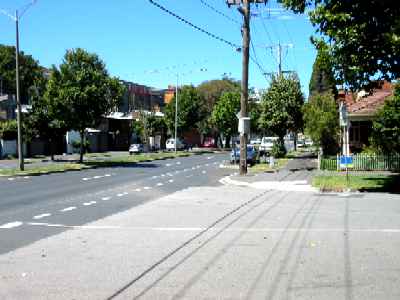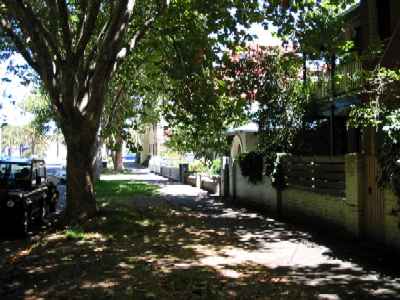The mysterious side of crime – the feared underworld – is governed by a rigid set of unwritten rules, one of the most sacred being the “code of silence” for to ‘rat’ on a fellow crim would be to sign one’s own death warrant. Certainly for George Hill Campbell (1898-1931) of 24 Wrexham Road, Windsor the threat of retribution was all too powerful and not even with death knocking on his door would he break the code.

Seen in company with two men at the Canterbury Road overpass opposite St. Kilda railway station at 7:50pm on the night of 6 April 1931, Campbell was twice shot point blank range from behind at the bottom of the ramp. The two assailants – both described as aged about 28 to 30-years-old, 5 feet 8 inches tall, medium build and clean shaven, one wearing a blue suit and light coloured felt hat, the other a khaki-coloured rain coat and identical hat – were seen running north along Canterbury Road towards Middle Park, then west along Mary Street to Beaconsfield Parade where they vanished without trace. Three days later, a .32 Bayard automatic was found under the fence of a house in Mary Street which later proved to be the murder weapon.
Described as 34 years of age, 5 feet 9 inches, brown hair and brown eyes, with a distinct mole on his left cheek, Campbell was rushed to the Alfred Hospital where Detectives Banner and McEwan recognised him as an astute ‘fence’ (receiver) of stolen property. With death knocking on Campbell’s door – he died the following afternoon – the detectives were unable to break the code of silence and another crime went unsolved (Banner: “If you knew who shot you would you tell me?” Campbell: “No. You ought to know better than to ask me that”). However, police believe Campbell confided the identities of the assailants to fellow gang members just before he died to carry out another of the time-honoured codes of the underworld: an eye for an eye.

Campbell’s life makes for remarkable reading. Described as having come from a good home with exemplary parents – Matthew Campbell and Emily Jane née Rae – numerous attempts were made to reform him before he developed into a hardened criminal; he squandered £1,250 pounds left by his late father in “riotous living”. He first came before the law in November 1922 when he was charged as a suspected person at Cheltenham and given a suspended sentence, his known priors included four years in Brisbane (August 1923) for the robbery of £240 worth of goods from “Duncalfe and Co Ltd”; two years for the robbery and vicious assault of Mr A Thomas a telephone linesman at Frankston (April 1929); and just before his death, had been released on 6 March after serving three months for assault. The police strongly suspected Campbell’s involvement in other crimes, including the robbery of “Head and Son Pty Ltd” a drapery firm in Bridge Road, Richmond on 19 March when £2,000 of goods were stolen, a crime they speculated that led to the underworld feud for Campbell had broken another unwritten rule: equal distribution of the spoils.
For never is honour among thieves more sacrosanct when it comes to the division of the spoils.
Campbell was laid to rest in Pres*U*21D on 9 April 1931.
Source:
The Argus 7, 8, 9, 22 & 23 April 1931, 10 June 1931.
The Herald 7, 8 & 13 April 1931, 9 June 1931.
The Age 7, 8, 9 & 22 April 1931, 10 June 1931.
